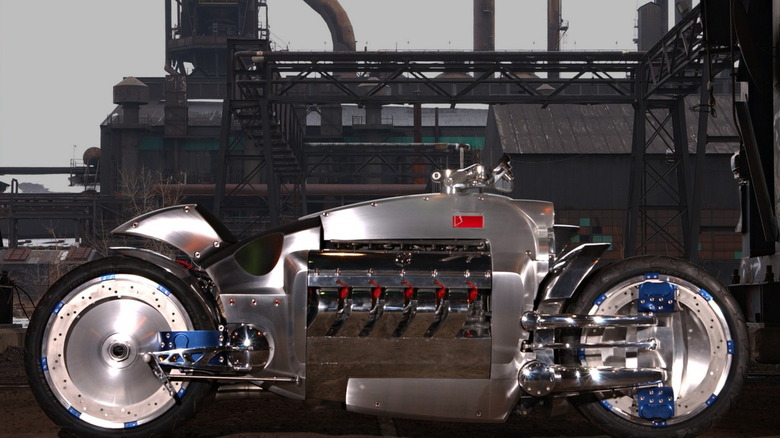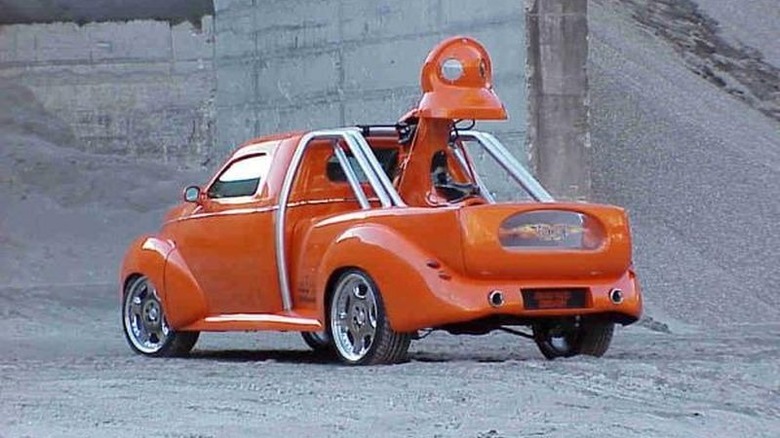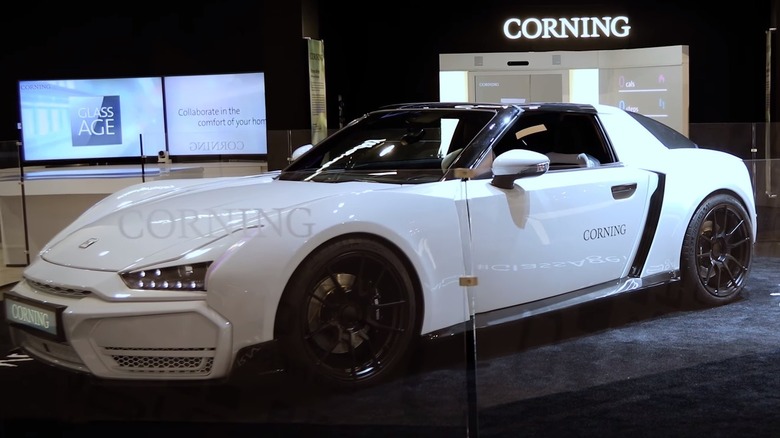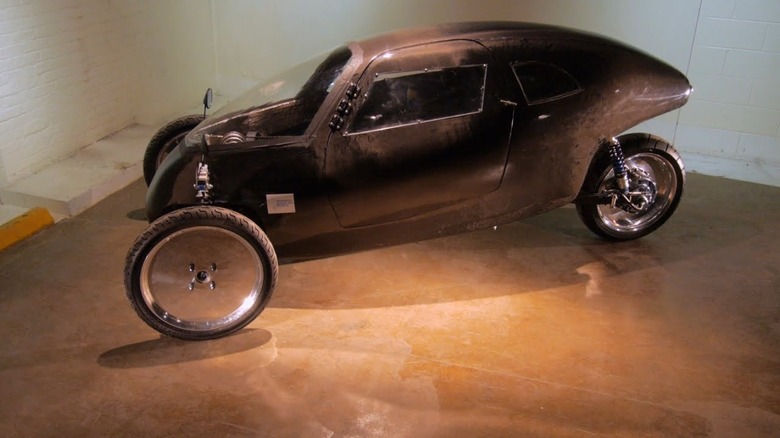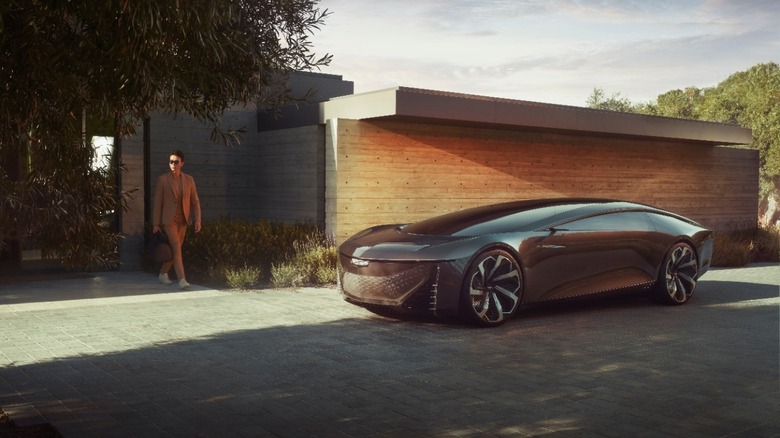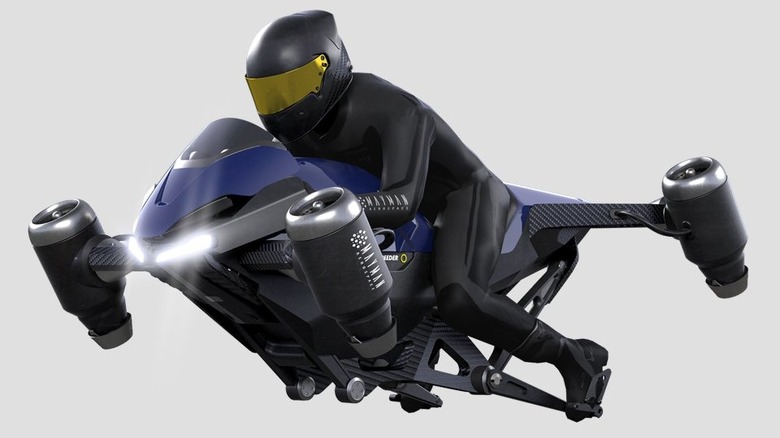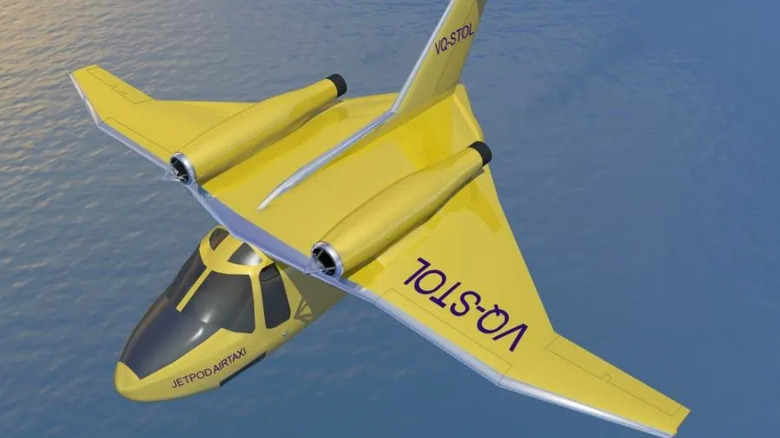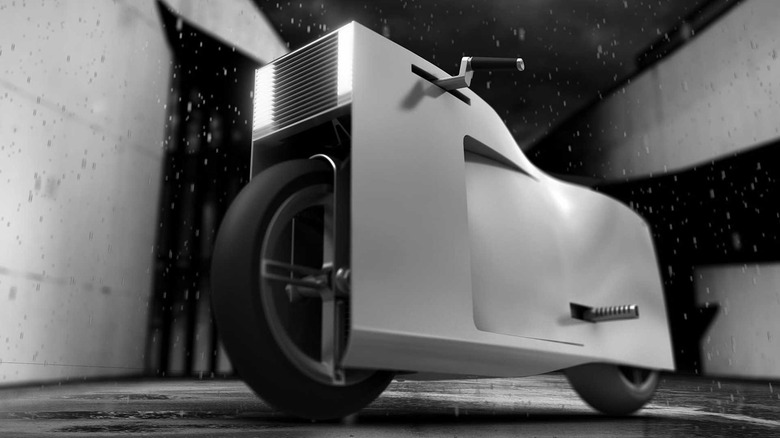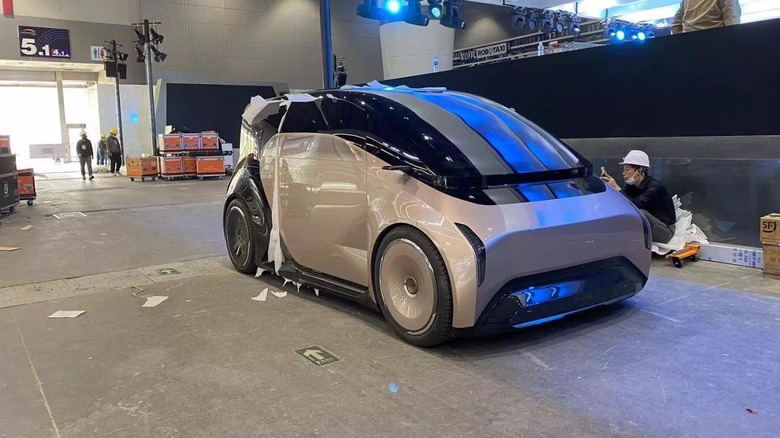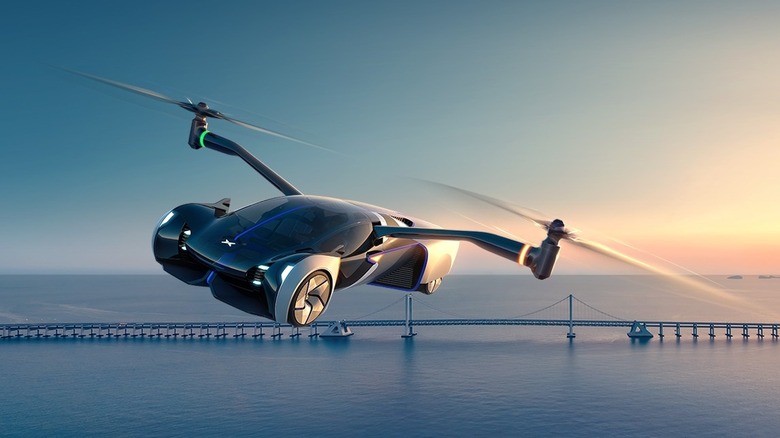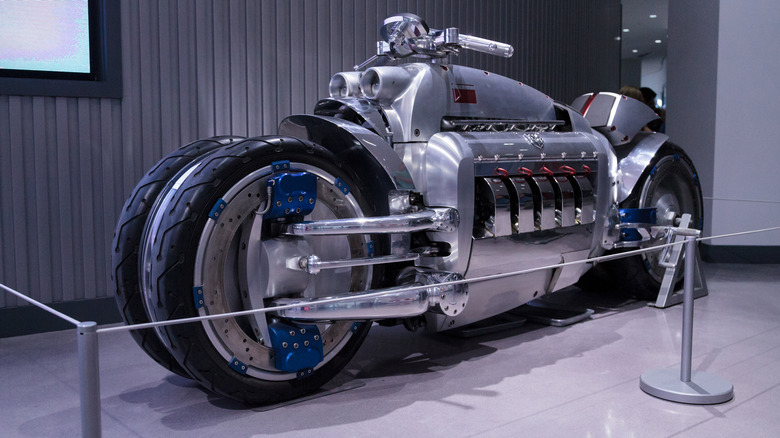10 Most Dangerous Concept Vehicles Of All Time
Creating concepts is a vital way for manufacturers to demonstrate new ideas, as it allows them to get feedback from potential buyers and the public before committing to a production run. In the case of some smaller companies, having a well-received concept is the sole difference between attracting well-heeled investors and going bankrupt. While some concepts are so good that they continue to attract the attention of enthusiasts decades later, most of them simply end up being forgotten about over time.
Amongst those forgotten or obscure concepts, there are some that stand out as being particularly weird, or ugly, or even dangerous. Innovation is constantly needed to keep vehicle technology progressing, but there are a few instances where innovations presented so much danger to the driver or occupants of the vehicle that it's better for everyone that they never made it onto the market. Of course, for every well-intentioned vehicle concept that came with potentially hazardous flaws, there are an equal number of madcap creations that will leave you scratching your head trying to work out why anyone would ever bother inventing one in the first place.
Rinspeed Tatooo.com's B.O.B.
Swiss design studio Rinspeed has been responsible for some of the most outlandish concept cars ever to grace the auto show circuit, but none of them are quite as dangerous as the oddly-named Tatooo.com. The concept is not just a single vehicle but rather two, the main vehicle being a pickup truck with a crane in the bed. It's a bit ugly, perhaps, but nothing life-threatening. The same cannot be said, however, for the motorized scooter mounted to the back of the truck, which Rinspeed named the Breathing Observation Bubble, or B.O.B. for short. Rinspeed's press release describes it as, "a totally new diving apparatus," since the scooter is designed to dive up to 30 feet underwater.
The diver is supposed to put their head inside the helmet that's fixed to the body of the scooter, with the helmet trapping an air bubble so that the diver's head can move around freely. There's no mouthpiece, but rather a small bottle of compressed air that Rinspeed claims will provide enough oxygen in the helmet bubble for up to an hour of diving. Even for experienced divers, diving while having your head stuck in an unsealed scooter helmet seems like a very bad idea. The really alarming thing, however, is that Rinspeed envisions that "beginners" will also be able to use it. It's best not to think about how those beginners would fare if the bubble bursts and they're suddenly underwater without oxygen.
Corning Connected Car
One of the scariest risks in a car crash is the chance of being hit with shards of glass or other sharp objects, and so most car manufacturers take good care to ensure that the number of sharp or breakable objects in the cabin is kept to a minimum. Corning, the makers of Gorilla Glass, wanted to turn that idea on its head in a bid to show how safe its glass products were. The company created the Connected Car, a futuristic vehicle where screens were placed liberally throughout the interior, each one made with Gorilla Glass. Even the steering wheel features a large glass pane in the center.
A representative from the company told CNN that an airbag would deploy to prevent the driver from hitting the glass in the event of a crash, and even if they did, the glass wouldn't shatter into shards anyway because of its unique construction. However, this arguably misses the point entirely. There's already a well-documented way to avoid occupants getting a face full of glass in a crash, and that's simply to put the glass in places where it's less likely to be hit in the first place. Even if Corning's glass is safer than regular glass, it's still unnecessarily risky to fit it in a steering wheel, or in any other area where it's not strictly needed for that matter.
Raht Racer
One of the biggest hurdles preventing widespread adoption of bicycles as commuter vehicles in America is that most road infrastructure was not built to be bike friendly. The network of busy highways and intersections that comprise many people's daily commutes make it too dangerous and impractical to use a bike as a primary means of transport, but one inventor tried to change that. The Raht Racer was an electric-assisted tricycle that riders would pedal just like a regular bike, but used an electric motor to get up to highway speeds. The small enclosed pod would protect the rider from bad weather, and allow them to carry a token amount of luggage.
The Racer was legally classed as a motorcycle rather than a car, so it didn't have to follow the same safety regulations as a four-wheeled vehicle would do. The inventor also claimed that the trike would be able to reach over 100 mph on the highway. At those speeds, it's likely that the skinny front tires would only need to hit a pothole or small piece of debris to lose grip, potentially sending the trike hurtling out of control and off the road. Perhaps the same can be said about some motorcycles, but then, there's an extra level of foolishness to crashing while furiously pedaling your tricycle in an attempt to hit triple-digit speeds. Perhaps unsurprisingly, the Kickstarter set up to raise funds for developing the vehicle never hit its goal, and the project eventually disappeared.
Cadillac InnerSpace
In an attempt to unshackle itself from its image as a has-been brand only loved by retirees, Cadillac debuted the futuristic InnerSpace concept at the CES show in 2022. It was met with a generally positive reception, but there is a whole list of reasons why it won't be seen on the road anytime soon, if ever. The biggest reason is the potential risk to both occupants and bystanders, as the InnerSpace is designed to be completely autonomous, with no manual input controls at all. Cadillac sees this as an opportunity for passengers to relax and perhaps watch a movie while they're whisked to their destination, but with the current state of full self-driving systems, that's simply not feasible.
Navigating a single city that's been carefully mapped by developers before the car hits the road is one thing, but self-driving systems would have to deal with everything from rural back roads to gridlocked highways. Incidents like the fatal 2018 crash involving a self-driving Uber prototype and a pedestrian have proven that fully autonomous systems still make mistakes, and those mistakes can cost innocent lives. For now, to release any car without a means of human intervention would directly threaten the lives of not only road users, but any bystanders enough to get in the way of one. Thankfully, it seems like the InnerSpace was more of a marketing exercise for Cadillac than anything else, as no plans have been announced to develop the concept any further.
Mayman Speeder
Jetpacks have been a staple in science fiction for decades now, but there are a group of startups out there that are determined that they won't remain fiction forever. One of those is Mayman Aerospace, who are working on a VTOL (vertical take-off and landing) aircraft that can be ridden a little like a motorcycle. The Speeder VTOL has attracted attention from a number of major organizations, including the U.S. Air Force, because of its potential to be used as a personal transport vehicle for both maintenance personnel and special operations. It uses a series of small jets to carry a single passenger (or small cargo payload) through the air at up to speeds of 150 mph.
Maximum flight duration is reportedly somewhere in the region of 10 to 20 minutes. It's claimed that the Speeder will be able to fly up to a maximum altitude of 15,000 feet, but one of the key selling points of the vehicle is that it's also capable of flying at low altitudes, too. There's no way of securing yourself directly to the vehicle to prevent accidentally falling off, and at lower altitudes, there's a risk that a parachute wouldn't deploy quickly enough to break your fall. Not to mention, with a relatively short maximum flight time, there's a risk that an unplanned diversion or headwind could leave the pilot unable to reach their destination before they run out of fuel.
Avcen Jetpod
Much like the jetpack, the idea of the flying taxi is not a new one, and inventors have been trying to get the idea to become reality for a long time. British-Malaysian startup Avcen was the brainchild of one such inventor, Michael Dacre, but sadly he was killed by his own creation in 2009. The VTOL aircraft was designed to be quieter and more convenient than a helicopter, enabling it to ferry passengers between city centers and low-density areas like airports with less noise pollution. The vehicle would only require a very short landing strip, not much wider than the size of a sidewalk, making it easy to incorporate into crowded city architecture.
Despite its seemingly practical nature, the Jetpod had a few major flaws. As a small aircraft with an unusual jet layout, it had the potential to become unstable during takeoff and landing, and that appears to be what happened in the fatal accident. Dacre had built a prototype version of the Jetpod and was taking it on its maiden flight at Taiping Airport in Malaysia when it lost control at around 650 feet, plunging suddenly before hitting the ground and catching fire.
Nonobject nUCLEUS
It's one thing to make a potentially useful vehicle that ends up being dangerous, but the Nonobject nUCLEUS seems to be not only riskier to ride than a regular motorcycle, but also ultimately a bit pointless. It was designed as a sort of futuristic take on the traditional motorcycle shape, with an electric motor enabling its box-like design. The whole bike lowers itself so the rider can mount it, and then when they're ready to set off, it rises again, leaving the rider higher off the ground than a regular motorcycle. That in itself potentially makes it more unsafe, but there's also the issue of all the needlessly pointy bits that form its unique bodyshell.
Any accident while riding the nUCLEUS could be made considerably worse if the rider hit one of the angular edges of the bike, while its brick-like aerodynamics could make it vulnerable to crosswinds, increasing a chance of an accident in the first place. It's certainly a striking design, and Nonobject should be applauded for presenting a fresh take on what a motorcycle could look like. That is, as long as no one actually ended up taking the risk of riding it.
IAT's Guangzhou Concept
No matter what segment they're shopping in, two of the key things that most consumers look for in a car brand are safety and build quality. China's IAT managed to prove it had neither of those things when its brand new concept car caught fire while on the stand at the Guangzhou Motor Show in December 2022. Footage captured by bystanders shows flames erupting from behind the barrier covering the IAT stand, which was still being finished by contractors at the time. The fire was eventually put out and the stand was hastily repaired in time for the show, but reports suggested there was a lingering smell of burning and some visible staining left around the area.
The company eventually issued a statement acknowledging the incident, claiming that the concept car in question was non-functional and that the fire was caused by a short circuit in one of the electrical systems that had been left in the vehicle during the preparation process. It stressed that no one had been injured in the fire and no significant property damage was caused, but tellingly, made no mention of the condition of the vehicle once the fire had been put out. Reports suggested that it was all but written off by the fire damage, making it not only one of the most dangerous concept vehicles to ever appear at an auto show, but one of the most short-lived, too.
XPeng X2
Chinese automaker XPeng is the latest to attempt to create a flying car, and its X2 concept is showing more promise than most. With a successful initial flight at the end of 2022 in front of a packed crowd, the electric X2 concept is set to continue development throughout 2023 and beyond, with the aim of launching a production version sometime in the middle of the decade. Per the Khaleej Times, a senior official at the UAE's Aviation Authority claimed that plans were already being made to incorporate eVTOL aircraft landing pads into the design of the latest luxury buildings, so it seems like flying cars might end up coming sooner than we expected.
With the deep pockets of the UAE's wealthiest residents, it's likely that a flying car would find plenty of buyers too, no matter what it cost. The trouble is, unleashing an entirely new mode of transport on the public will potentially cause some serious problems. The X2 is claimed to be fully autonomous, which presents XPeng with a tricky decision to make. Add in a method of human intervention and a few overconfident owners might take the X2 for a joyride and get into an accident, but leave no way of intervening and the occupants might be killed if the AI system makes a mistake. Either way, if the X2 concept does become a reality, it seems like there might be a new type of vehicle collision for emergency responders to deal with, one with potentially catastrophic consequences.
Dodge Tomahawk
One of the most wild concept vehicles of the '00s, the Dodge Tomahawk was a four-wheeled motorcycle with the 500-horsepower V10 engine from a Dodge Viper. It was built as both an engineering challenge and no doubt as a marketing exercise, but not really as a functional vehicle. That was mainly because with its estimated top speed of 400 mph, you'd have to have a death wish to even attempt to ride it at speed. Its unwieldy proportions and minimalist construction meant that even getting on the Tomahawk was a challenge, with Dodge's demonstration rider adopting a stretched-out position to straddle between the seat and the handlebars.
The Viper itself had a reputation as a difficult car to drive thanks to its abundant, punchy power delivery, but the Tomahawk would have taken things to a whole new level. Usually, we would say it's a shame that a certain concept never reached the road, but in this case, it's almost certainly a good thing. Anyone brave or foolhardy enough to buy one would have quickly ended up taking a trip to the hospital (or worse) if they'd tried to ride it at full pelt, so for everyone's safety, it's a relief that this most dangerous of concepts never made it to public roads.
